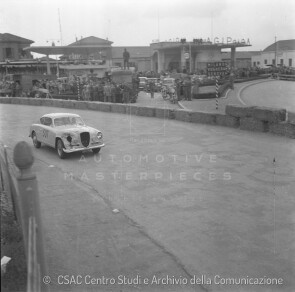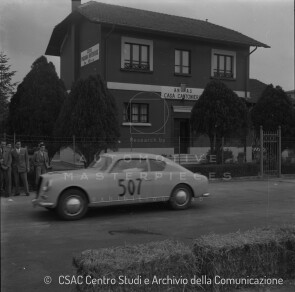
1952 Lancia Aurelia B20
ON/OFF
Why am I an Automotive Masterpiece?
The post-war period brought a desire, or rather a hunger, for renewal. Everything that suggested the past, before the war, needed to be forgotten or overcome. Cars became the primary symbol of this renewal, both in practice and in dreams. From its very first appearance, the Lancia Aurelia made a sensation, not only because, together with its contemporary Fiat 1400, it represented the first truly new "Italian" automotive product of the post-war period, but also for its technical innovations. Lancia’s revolutionary first post-war car, designed by Vittorio Jano, was introduced in 1950. It featured the first production V6 engine—a 60° design developed by Francesco de Virgilio—combined with a balanced transaxle gearbox and inboard rear brakes, all of which were groundbreaking innovations in post-war Europe. Developed in various versions, the B20 coupe was its pinnacle. The Aurelia Gran Turismo was introduced in 1951 as a coupé evolution (B20 type) of the B10 saloon with an engine that, finally, was introduced with a displacement at the class limit. This was the result of a new company-wide policy imposed by Gianni Lancia, who had taken over from his mother in 1947. The Aurelia engine had been increased to 1,991 cc in 1951 and, in its uprated form, was fitted into the B20. Lighter and with a higher gear ratio than the saloon, the B20 was capable of exceeding 160 km/h. Introduced in 1953, the 3rd and subsequent series B20s were powered by a 2,451 cc, 118 hp version of the pushrod V6. The design, created by Mario Felice Boano and refined and built by Pinin Farina, became an instant classic due to its smooth, clean lines and competition prowess. The car was immediately entered for the 1951 Mille Miglia, with three "private" examples, out of the four that were registered in the names of their drivers, finishing in the top seven overall and taking the first three places in class. Bracco-Maglioli finished second, beaten only by Villoresi’s Ferrari, which had over twice the displacement of the Lancia. Bracco, partnered by Lurani, later drove his car from Italy to France and finished 12th overall in the Le Mans 24 Hours. Lancia prepared seven "Corsa" versions of the car for 1952, six of which were entered by privateers. These cars secured 2nd, 3rd, and 4th overall in the Giro di Sicilia, finished 3rd, 5th, 6th, and 8th overall at the Mille Miglia, secured 1st, 2nd, and 3rd at the Targa Florio, placed 4th, 6th, 8th, and 9th in the Coppa d'Oro delle Dolomiti, and, when equipped with a supercharger, took 4th at the Carrera Panamericana.
The Lancia Aurelia B20 GT berlinetta Pinin Farina, chassis no. *B20-1630* is a beautiful example of the "II series" from 1952, in black color with gorgeous red interiors,even if photos of the time show the car in the race with an originally pale colored livery. The Aurelia B20 appears to have been classified "by series" only in the first two editions with a 2-liter engine, while the production of the 2.5-liter engine has never been officially classified by "series", a subdivision that entered into common use for reasons of greater immediacy. At the beginning of March 1952, on the occasion of the Geneva Motor Show, the second series appears. This new B20, which builds on the experiences made with the first races of 1951, has a modified distribution, a slightly increased compression ratio (from 8.4 to 8.8: 1), maximum engine torque unchanged but higher power (80 HP instead of 75). Slightly heavier (50 kg more) and faster (2 km/h more), the second series stands out externally essentially for the adoption of new steel bumpers without bolts, for the rear part of the bodywork where the so-called "codine" (small fin tails) and for the addition of a chrome profile under the doors. Overall, the car is 4 cm lower (136 instead of 140) and 1 cm longer (429 instead of 428). Inside, there is a new dashboard with two circular instruments, with rev-counter (the clock disappears). Chassis no. *B20-1630* was prepared for racing and took part in the 1953 Mille Miglia, with race number 507, driven by the racing driver and then owner Gustavo Richter, accompanied by Antonio Nicolai. The car,had a series of misadventures: on the Via Emilia, to avoid a cyclist, swerved violently hitting a wall, with considerable damage but, nevertheless it continued. The car will not reach the end of the race, however.The car has a short history of participation in sporting events between 1953 and 1954. In 1953 it took part in the VII Volante d'Argento, finishing 18thin class; in 1954 it took part in the III Rallye del Mare e dei Monti, finishing 3rdin class. Chassis no. *B20-1630*it has been owned, in recent years (2012-2014), by the well-known stylist Stefano Ricci.






